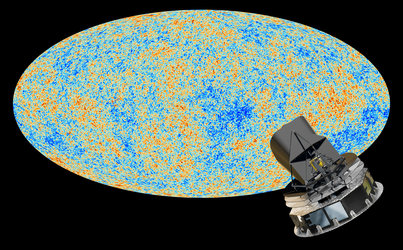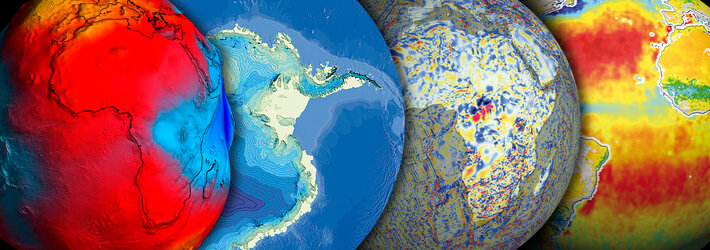GOCE Mission Scientist: Interview with Roger Haagmans
Roger Haagmans has been involved with the GOCE mission since 2001 throughout its design and development, with particular emphasis on the scientific goals relating to the solid Earth, geodesy and surveying.
As Mission Scientist, his role in supporting the mission preparations has been to ensure that the satellite and ground data processing systems are compatible with achieving the mission objectives.

Roger Haagmans, a Dutch national, started working at ESA's European Space Research and Technology Centre (ESTEC) in the Netherlands in 2001 and contributes to the preparation of the Earth Explorer missions GOCE and Swarm.
Haagmans obtained his Masters in Geodesy and became an Assistant Professor at Delft University of Technology in the Netherlands. Subsequently, he was Associate Professor in Geodesy and Surveying at the Agricultural University in Norway.
ESA: What has your responsibility been throughout the development of the GOCE mission?
Roger Haagmans
As Mission Scientist I have been involved with GOCE since the industrial design and development phase, and I will continue to stay involved during launch and the early operations phase. My responsibility has been to follow the design and satellite development with special emphasis on the product quality and the calibration and validation of the new gradiometer products. I also supported the development and implementation of the global gravity model capacity providing level-2 products.
ESA: What makes a gravity mission special?
Roger Haagmans
Although gravity is a force everybody knows about and feels, it's invisible and so less tangible. When you measure gravity at any point, the measurement contains not only pull of the Earth but also the pull objects in the vicinity as well as effects from far away such as distant mountain ranges. Therefore, one measurement of gravity includes all the constituents that make up 'g', so in a way it's already a 'global measurement'. Since gravity varies from place to place on the surface of the Earth, the detailed gravity field model that GOCE will provide will help unravel not only where these variations are, but also why they are there.
ESA: How will GOCE advance our understanding of the physics and dynamics of the Earth's interior?
Roger Haagmans
Materials within the Earth's interior are different in composition and not uniformly distributed. Consequently, the force of gravity actually varies slightly from place to place on the surface of the Earth. Turning this around one can analyse the gravity variations from the model GOCE will provide and we can learn more about the internal mass distribution of the Earth. The combination of seismic information and potentially magnetic field information with the gravity model will lead to an even better model of the Earth's crust and the upper part of the mantle. This is because different types of sensors experience the effects of the internal distribution differently. Together, this can lead to improved knowledge of plate tectonic processes and could eventually result in a better understanding of the mechanisms behind post-glacial rebound, earthquakes and volcanic activity.
The GOCE mission will help to establish a unified system for heights between all continents and islands.
ESA: Apart from being used for scientific research, will an improved model of the gravity field have any practical applications?
Roger Haagmans
An accurate model of the geoid, i.e. the surface of the sea solely shaped by gravity, will be used as the reference for measuring heights. The GOCE mission will help to establish a unified system for heights between all continents and islands. This means, for example, that a comparison between the heights of mountains on different continents can be compared directly, to within centimetres. In the context of surveying and construction, traditional levelling can be replaced by faster 'indirect' levelling through differencing the GPS height and the geoid height at any point. Furthermore, tide gauges can be brought into the same height system worldwide, which will make the analysis of global sea-level change from gauge and satellite data more consistent, accurate and reliable. This is of course a key pre-requisite in the context of studying global change.
ESA: With GOCE about to launch is your involvement in the mission now over?
Roger Haagmans
My involvement will continue until after launch when we have to learn from the successes and potential limitations of this mission for designing future mission concepts for monitoring mass distribution and mass transport in the Earth system. Another Explorer mission for the Earth magnetic field is Swarm and also has scientific objectives focussing on the Earth interior. It will be exciting to revisit some of the Earth interior modelling results from GOCE at the moment when a combination with Swarm data is possible.
ESA: Where will you be for launch?
Roger Haagmans
I plan to attend the launch event at ESTEC and I look forward to celebrating a successful launch with guests and colleagues.
Editor's note:
This is one in a series of interviews with a few of the key people that are involved in the GOCE mission. Please check back as the list will be added to over the coming weeks.





